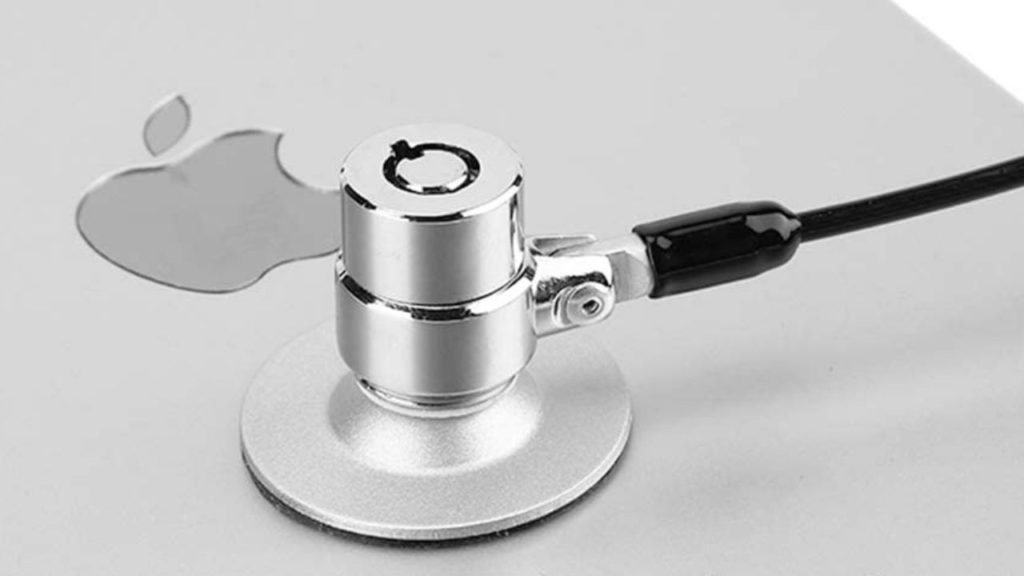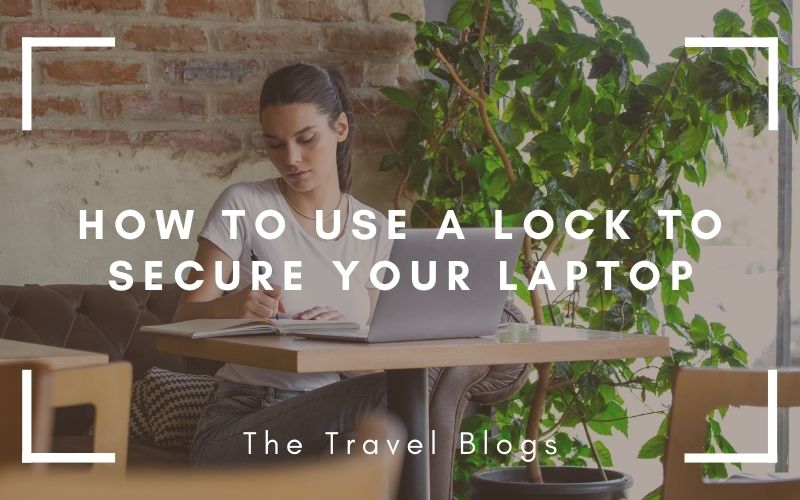We’ve come to trust our laptops with passwords, photos, videos, documents, and all sorts of sensitive information. Most of us have virus protection, we may even use VPNs, but what about actual physical security? Expensive laptops are desirable and a perfect target for grab and run thefts.
It stands to reason that the more you travel, the more at risk you may be. However, there is a great bit of equipment that can greatly reduce the chances of your laptop being stolen and if you know how to use laptop lock, you’ll have peace of mind.
There are various ways in which you can safeguard your laptop like installing tracking software, following various security tips, and using various tools. You will find various tools in the market that help in securing your laptop, and one such popular tool is Laptop Lock.
Keep on reading and you’ll be ready to know how to use laptop lock to secure your laptop in the next 10 minutes.

Note – Please know, some of the external links on this page are affiliate links, this means that if you purchase after following one, I make a small commission from the sale at no additional cost to yourself.
How to use a laptop lock to secure your laptop
1. Check for compatibility
Laptops aren’t usually sold with the Kensington locks, so it never really comes to mind to check for the laptop lock holes when you get your new expensive computer.
Kensington lock holes (or K-Slots) are tiny holes made for securing electronic equipment. The laptop lock has an anchor reinforced with a metallic cover and a rubber-metal cable with a key or combination-secured latch. The laptop lock fits into the hole to secure expensive electronic equipment while the cable wraps around something solid.
Look around the laptop for an ear jack-shaped hole that is about 0.33 inches in diameter with the image of a padlock beside it.
Determine if your laptop is compatible with a laptop lock by looking on the side or back of your computer to see if it has a Universal Security Slot (USS). The Universal Security Slot (USS) is a round hole that is typically located on the side of your laptop but may also be located on the back of some models. Most laptop models have a small picture of a lock next to the hole, which measures approximately 1/3 inch.
Most new laptops come with it for sure, but if you can’t seem to find it, reach out to the manufacturer, or search Google for the location of the security slot. The working of the laptop lock is very simple. It works the same as bicycle chain locks so at one end you have the lock that you have to insert into the laptop while the other end is a long metal chain that you have to wrap around a heavy immovable object. This is to be done because the immovable object acts as an anchor and restricts the portability and movement of your laptop.
If your computer does not come with a K-slot, you can get lightweight locking stations. These work by clamping to your computer and the cable lock plugs into the laptop locking dock.
If your laptop has a lock slot, you can easily connect the laptop lock to this opening, making it hard for any thief to pull it out. For MacBooks, there are no lock slots, but you can buy a lock that attaches to the laptop’s rubber feet or clamps tight to its lid.
A final choice would be the adhesive style of laptop lock. These are often less desirable as they involve a lump of metal being stuck to your computer, but they are still better than nothing and work great, especially for tablets and smaller devices. They are also often cheaper than the Kensington slot locks or docking station locks.

2. Buy your Laptop lock
Now you know what you need, it is time to buy your laptop lock online or from a computer supply store. There is a vast collection of Kensington locks available, search for a strong one and place your order.
A laptop lock is the most secure form of tool used to safeguard portable laptops, especially at places offices, coffee shops, cafeterias, restaurants, and Wi-Fi areas of hotels. Using a laptop is especially useful when you want to leave your laptop alone for some time in a public place.
Once received, remove the packaging stuff, unbox the laptop lock and release the cord from the tie.
3. Attach your lock to something sturdy
The most important part of using the lock is finding the unmovable object you will bind the lock to. It is preferable if the object you’re attaching the laptop lock to is a fixed one or extremely heavy at least, for example, a table leg.
If you find the perfect stationery object to bind the laptop to, wrap the lock around it until it forms a loop as you pass the lock through the metallic chain.
Then, plug the head of the lock into the Kensington lock slot of the laptop, attach the adhesive pad or set up your dock.
Before you do this, it would be smart to try unlocking the lock first. If the lock requires a unique combination, then try readjusting the numbers or character keys you’ll use to unlock the K-lock to something only you can know but is easy to remember.
Don’t try using the laptop lock until you’ve set the unlocking pattern or tested the key.
There are many types of unlocking patterns available. Some laptops locks require you to twist in a key, while other laptop keys utilize a unique combination locks of adjustable wheels.
Laptop locks that use four-digit combinations are commonplace nowadays, but the choice is ultimately yours to make.

What’s the risk of losing my laptop?
if you have a black belt in Tae-kwon do, you might be fearless about the safety of your stuff, but even the confidence of a grandmaster could be tested when they discover that a laptop theft happens every fifty-three seconds (that’s 53 seconds).
According to the research undertaken by Kensington lock owners, every personal laptop has a 10% likelihood of being stolen over the course of its lifetime.
Doubt the source? Then about the fact that 86 out of 100 IT professionals have reported that someone in their organization has lost a laptop to theft.
Also, more than half of that number also confirms that the thieves accessed sensitive data after taking the laptops.
Studies suggest the worth of a laptop to a business to be $47,000 on average. Worryingly, 65% of workers save passwords and other sensitive information on their laptops without protection.
In one particular incident that occurred in the second month of 2016, a stolen laptop forced the HHS (United States Department of Health and Human Services) to publicize a disclaimer announcing that more than 5 million people had their sensitive private information exposed. Just from one laptop!
When are you most at risk?
In transit
25% of stolen laptops are lost in transit. This could be because someone forgot the laptop in a cab, or it could be stolen from a car having been left visible.
It is good practice you keep your Kensington lock attached when working in the car.
At the office
The place of work, which is supposed to be the safest place for your laptop, came in as the second most frequent stolen laptop spot. 23 out of every 100 stolen laptops move from the office!

Airports
Anyplace with too much traffic is the office space for pickpockets, so it’s not very surprising that people lose their laptops at a rate of 15% in airports.
Hotels
That nice-looking concierge at the hotel might be trustworthy, but are you sure about the housekeeper or other people with access to the hotel room when you’re not around.
Restaurants
You only wanted to visit the bathroom for a minute, you didn’t mean to become part of the 12% that lose their laptops in restaurants. Sorry, but get a laptop lock next time.
Final Thoughts
For people living their lives on the go, losing a laptop can be even more devastating. Your pictures are all gone, but imagine the thief going through your mail to get all your passwords (Yes, you’re not the only one that does that). It’s so much easier using a laptop to ruin someone’s life than to hack into the person’s complex and secure network.
You now know how to use a laptop lock to secure your laptop. So, take a cue and make your laptop even safer than your office network with all its sophisticated network security. Invest in a laptop lock and rest assured that your laptop won’t bolt as soon as your eyes leave the laptop. Better be safe than sorry, you know?

The effectiveness of your laptop lock as a security tool will be significantly impacted by the strength of its connection. Therefore, it’s crucial to make sure it’s constructed of sturdy materials.